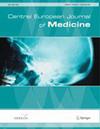Discharge times for knee arthroscopy in spinal vs. general anesthesia
引用次数: 3
Abstract
BackgroundSpinal anesthesia (SPA) and general anesthesia (GA) are both safe techniques for knee arthroscopy. In this prospective, single-centre, randomised, clinical trial we compared the discharge times of SPA using 50mg hyperbaric prilocaine 2% and GA with propofol and sufentanil in patients undergoing ambulatory knee arthroscopy.Methods50 patients (18–80 years / American Society of Anaesthesiologists grade I–III) were randomized equally to receive either SPA or GA. The main outcome variable was the time until discharge from the day-surgery centre. Anesthesia related side effects, postoperative analgesics and patient satisfaction were assessed.ResultsTwo of the spinal blocks failed and GA had to be provided. Despite of a faster recovery (unassisted ambulation: SPA: 90 (90–295)min vs. GA: 156 (93–235)min, p=0.0029), spontaneous voiding led to a delayed discharge in the SPA group (SPA: 240 (135–295)min vs. GA: 156 (93–235)min, p<0.0001). There were no differences between the groups regarding other anesthesia related side effects, postoperative demand of analgesics or patient satisfaction.ConclusionSPA with 50mg hyperbaric prilocaine 2% leads to a later discharge than GA with sufentanil and propofol. However, a reevaluation of existing discharge recommendations including obligatory micturition is necessary, to make SPA become even more advantageous for ambulatory surgery.脊柱与全身麻醉下膝关节镜检查的出院次数
背景脊柱麻醉(SPA)和全身麻醉(GA)都是膝关节镜检查的安全技术。在这项前瞻性、单中心、随机的临床试验中,我们比较了在进行动态膝关节镜检查的患者中,使用50mg 2%高压丙洛卡因的SPA和使用异丙酚和舒芬太尼的GA的出院时间。方法50例患者(18-80岁/美国麻醉医师学会分级I-III级)随机分为SPA组和GA组。主要结局变量为从日间手术中心出院的时间。评估麻醉相关副作用、术后镇痛药及患者满意度。结果2例脊髓阻滞失败,需给予GA。尽管SPA组恢复更快(无辅助活动:SPA: 90 (90 - 295)min vs. GA: 156 (93-235)min, p=0.0029),自然排尿导致SPA组延迟出院(SPA: 240 (135-295)min vs. GA: 156 (93-235)min, p<0.0001)。两组在其他麻醉相关副作用、术后镇痛药需求及患者满意度方面无差异。结论舒芬太尼和异丙酚加用高压氧丙罗卡因50mg组比加用舒芬太尼组更晚出院。然而,重新评估现有的出院建议,包括强制性排尿是必要的,使SPA对门诊手术更加有利。
本文章由计算机程序翻译,如有差异,请以英文原文为准。
求助全文
约1分钟内获得全文
求助全文

 求助内容:
求助内容: 应助结果提醒方式:
应助结果提醒方式:


